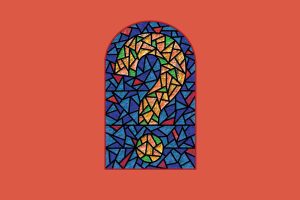1959
January 25 – After celebrating a Mass for Christian unity, Pope John XXIII announces his intention to call the 21st ecumenical councilor of the Roman Catholic Church. John envisioned the council as “an invitation to the separate [religious] communities to seek unity, for that is what many souls long for.”
May 17 – John appoints a commission to consult church leaders and theologians to form an agenda for the council. The commission comprises highly placed members of the Roman Curia (the Vatican bureaucracy). More than 9,300 proposals are submitted.
1960
June 5 – John establishes 11 commissions to prepare the council’s agenda from the proposals. Fearful of the potential impact of the council on the traditional, church, the curial cardinals see that mostly Rome-based theologians are appointed to the preparatory commissions. The drafts produced by the commissions are subsequently very conservative.
1961
December 25 – John summons the council to Rome for the following year.
1962
Non-Catholic churches are formally invited to send observers to the council. Many Protestant churches accept, though Orthodox churches initially react with skepticism.
October 11 – The first session of the Second Vatican Council convenes. It is the largest and most representative council in the history of the church. John is carried in through the bronze door of Saint Peter’s Basilica on the sedia gestatoria, but leaves it to walk through the ranks of the delegates. As a symbol of collegially, he wears a bishop’s miter instead of the tiara.
Work proceeds among the 16 commissions – one for every document that will be produced.
October 13 – Cardinals Achille Lienart of Lille, France and Joseph Frings of Cologne, Germany successfully petition the council to allow delegates to elect the most qualified members as leaders of the commissions, not just members of the preparatory commissions. This begins to steer the council in a more progressive direction.
October 22 – The document on the liturgy comes up for discussion, and there is immediate division among delegates. The progressives are upset that the document has been altered since it was approved by the preparatory commission.
A few days later, while complaining about revolutionary tendencies in the council, Cardinal Alfredo Ottaviani, a member of the curia, refuses to stop speaking when his time is up. The assembly applauds when his microphone is turned off.
December 8 – The first session closes with none of the originally drafted documents being approved.
1963
June 3 – John, whose health had been declining since November, dies. “This bed is an altar,” he says on his deathbed. “An altar needs a victim. I am ready.”
June 21 – Cardinal Giovanni Battista Montini of Milan, Italy is elected pope. He takes the name Paul VI. In a radio address the following day, Paul says, “The main duty of our pontificate will be the continuation of the Second Vatican Council.”
September 29 – The second session of the council convenes. Reviving an ancient liturgical custom, Paul concelebrates the opening Mass with 24 bishops.
November 8 – Cardinal Frings criticizes the Holy Office, calling for the reform of the Roman Curia. Though Cardinal Ottaviani denounces the statement as an attack on the pope himself, Paul calls Frings later that day to say he approves of the criticism.
December 4 – The second session ends with two documents approved – the Constitution on the Sacred Liturgy and the Decree on the Instruments of Social Communication.
1964
September 8 – Paul announces that, for the first time in the history of the church, women will be admitted to council sessions.
September 14 – The third session begins. In this session, Paul proclaims that the issue of birth control is off limits to the council, as it was already being discussed by a separate commission (formed by John months before his death).
November 21 – At the close of the session, three more documents are promulgated – the Dogmatic Constitution of the Church, the Decree on Ecumenism, and the Decree on the Catholic Eastern Churches. Paul announces that the eucharistic fast will be reduced to one hour.
1965
September 14 – The fourth session convenes. Paul announces that he is establishing the Synod of Bishops to continue the collaboration between pope and bishops. For most of the final session, the council members discuss the document on the church in the modern world.
December 6 – The council approves the last of the remaining 11 documents, including the Pastoral Constitution on the Church in the Modern World, an important document on Catholic social justice. Paul announces a major reform of the Roman Curia.
December 7 – With Athenagoras I, the Patriarch of Constantinople, present, Paul removes the excommunication (in place since the schism of 1054) of the Eastern patriarch. Athenagoras reciprocates by removing the Eastern Orthodox excommunication of the pope, and the two leaders embrace.
December 8 – The Second Vatican Council closes with a ceremony in St. Peter’s Square.
1966
June 24 – The papal birth control commission concludes that contraception is not intrinsically evil and recommends a change in church teaching.
1968
July 25 – Paul releases the encyclical On the Regulation of Births (Humanae Vitae) reiterating the prohibition of artificial birth control.
1971
November 30 – The Synod of Bishops releases the document Justice in the World, the first cooperative effort of the newly formed synod.













Add comment